

How much do top fashion brands really depend on China? When, in July 2011, LinkedIn hired Dan Roth, everyone in the media industry thought the “professional” social network was up to something big.
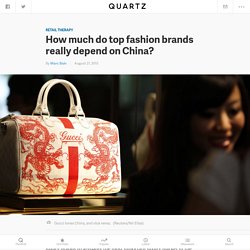
Roth came with an impressive résumé: Forbes, Condé Nast Portfolio (a great but ill-fated glossy), Wired, then Fortune, where he served as managing editor before being poached by LinkedIn. Four years later, Roth snatched Caroline Fairchild, a young, talented writer and editor from Fortune. Again, many thought this was the moment. The trade press, always prompt to draw doomsday scenarios, came up with sensational headlines such as “How Dan Roth became the most powerful editor in business publishing” (Digiday), or “Media frenemy LinkedIn raids Fortune, Wall Street Journal for editors” (AdAge). Worrisome indeed. Everyone (yours truly included) was wrong about LinkedIn editorial potential; it didn’t became a significant business media player—and most likely never will. Why? Dan Roth takes the defense of his platform’s transparency to an extreme.
Fashion's luxury brands are trying their luck in smaller British cities in a bid to boost sales - Business Analysis & Features - Business. Transgender Models Strike A Pose In New Barneys Ads, Catalogs: PHOTOSNewNowNext. By Eric Shorey 1/30/2014 Valentijn (on left) wears Giorgio Armani.
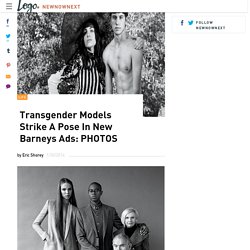
Ryley (center) wears Armani Collezioni. Leonard and Gloria wear their own clothes. Photo © Bruce Weber. Barneys has taken a progressive step forward with its new ad campaign and catalogs: Shot by legendary photographer Bruce Weber, “Brothers, Sisters, Sons & Daughters“ features some 17 trans men and women sporting high-end fashion available at the luxe retailer “I was exquisitely aware that in the last decade, the [lesbian, gay and bi] communities have made extraordinary advances, and the transgender community has not shared in that progress,” Barneys marketing exec Dennis Freedman, formerly the creative director of W magazine, told the New York Times.
The models are depicted interacting with family members and loved ones (while still looking devastatingly gorgeous) and their personal stories are being shared on a Barney’s mini-site, The Window. View some images from the “Brothers Sisters, Sons and Daughters” campaign below. From Givenchy and Alexander Wang, Competing Visions of New York. Photo On Sept. 11, as the sun set over the Hudson and bathed in silver and rose, Givenchy held a fashion show on Pier 26, on the far western edges of TriBeCa, in the shadows of the skyline.
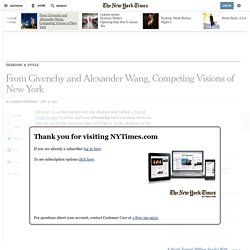
Apple embraces its future as a very expensive luxury brand. Apple products were always high end, but now they're shooting for being downright rich.
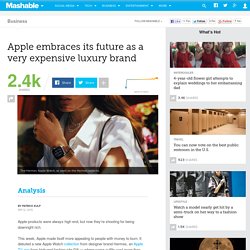
This week, Apple made itself more appealing to people with money to burn. It debuted a new Apple Watch collection from designer brand Hermes, an Apple TV app from high-end fashion site Gilt — where some outfits cost more than $1,000 each — and rose gold iPhones. The mass-appeal, cheaper iPhone 5C was quietly shelved. Apple was putting on the ritz. Given its heavy focus on design, this isn't surprising. "[It's] a continuing strategy by which Apple positions themselves as a company that appreciates the same level of quality that is often times associated with luxury brands," said Gartner analyst Brian Blau. But in recent months, Apple has taken its luxury cachet to new heights, spurning more affordable tech for ultra-high-end accessories. Image: Ryan Emberley, Invision/Associated Press Its biggest step in this direction was the launch of the Apple Watch. Image: Eric Risberg/Associated Press. Queen 'helps sell UK luxury brands'
The Queen plays a key part in selling Britain's luxury brands abroad, according to Warwick Business School.

With the luxury market worth around £167 billion last year, many brands have found a perceived association with royalty provides a key advantage over rivals. "Luxury goods are defined as those satisfying hedonic rather than functional needs and our research has found this is an area that Britain enjoys a distinct advantage in," said Professor Qing Wang. "The Queen is a significant reason for this, as a very important factor that makes Britain stand out is that it incorporates tradition and innovation seamlessly.
"Put differently, Britain's advantage lies in the so-called soft power, which is defined as the ability to get what you want through attraction rather than through coercion, and the UK's royal heritage is a key part of that. " The research focused on the China, one of the biggest markets for luxury goods. Luxury brands must redefine the way they do business. There were times when China was the holy grail for global retailers.
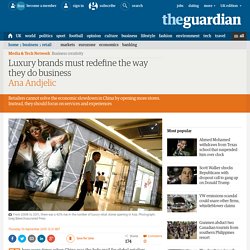
Logo-obsessed Chinese buyers seeking opulence were armed with cash fresh from the economic boom. Luxury retail brands flocked to the new market, with the result of 35% of sales for brands such as Omega, Harry Winston and Balmain coming from Greater China, according to estimates by Exane BNP Paribas. The region is responsible for a whooping 25% of sales at Burberry and 20% of sales at Prada. The strategy of growth by opening stores in emerging and existing markets is neither new nor unique to luxury retail. It is a reflection of the modus operandi of the industrial age, where scaling growth is linked to incessant production. The logic of this is that if consumers aren’t buying your stuff, create more stuff.